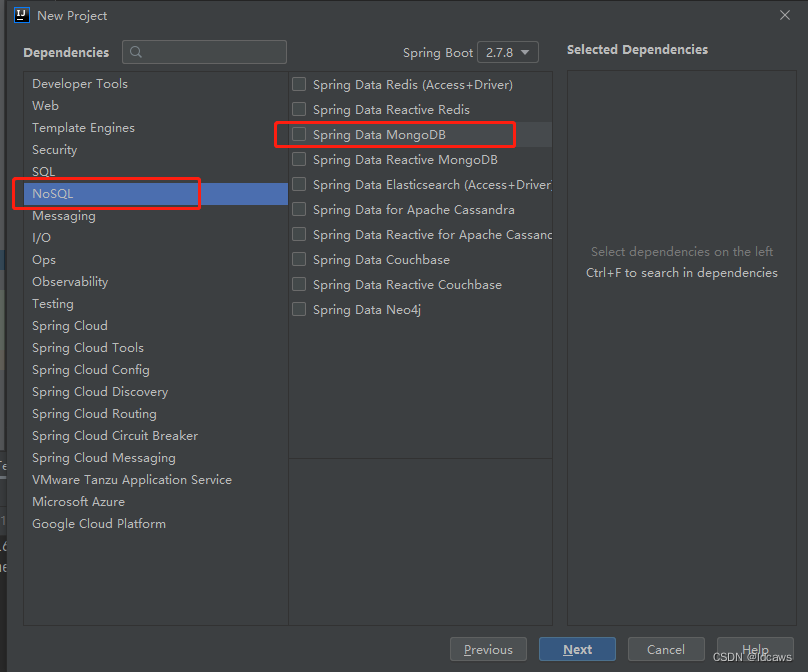首先spring自带了mongodb的orm,spring data mongodb,但是这个框架非常难用,最令人抓狂的是每个文档都要带一个 _class 字段,因为这个是string的,所以占用不少空间,而且去除也比较麻烦。故而使用 zfoo orm 框架
Ⅰ. 简介
基于MongoDB的orm框架,提供POJO对象和MongoDB数据库之间的映射
Ⅱ. 注意事项
- POJO对象的属性必须提供get和set方法,否则无法映射
- 不支持泛型
- 如果不想映射某属性,直接加上transient关键字
- 目前支持基本数据属性(byte,short,int,long,float,double,boolean),字符串String,List,Set集合属性的映射,不支持Map
- 数据库主键能用整数尽量用整数,因为MongoDB默认的主键是一个字符串,比较占空间
- 数据库使用自研的orm框架,比如一个实体类UserEntity,映射到数据库中的集合为user,首字母小写,去掉Entity
- 基于 caffeine 的高性能数据缓存
- 语法校验,如对没有加上get和set的字段自动语法提示
Ⅲ. 使用方法
1. IAccessor接口,为数据访问接口
- 插入数据到数据库,会以对象的id()方法的返回值作为主键
OrmContext.getAccessor().insert(obj)
- 删除数据库中的数据,会以对象的id()方法的返回值作为查找关键字,删除以这个id()为主键的数据
OrmContext.getAccessor().delete(obj);
- 修改数据库中的数据
OrmContext.getAccessor().update(obj);
2. IQuery接口,为数据复杂查询接口
3. 缓存使用方法
例如有下列配置
<orm:config id="config" entity-package="com.zfoo.orm.**.entity">
<orm:host database="test" user="" password="">
<orm:address name="server0" url="127.0.0.1:27017"/>
</orm:host>
<!-- 缓存策略 -->
<orm:caches>
<orm:cache strategy="ten" size="10" expire-millisecond="600000"/>
<orm:cache strategy="hundred" size="100" expire-millisecond="600000"/>
<orm:cache strategy="thousand" size="1000" expire-millisecond="600000"/>
<orm:cache strategy="threeThousand" size="3000" expire-millisecond="600000"/>
<orm:cache strategy="tenThousand" size="10000" expire-millisecond="600000"/>
</orm:caches>
<!-- 持久化策略 -->
<orm:persisters>
<orm:persister strategy="cronDefault" type="cron" config="0,30 * * * * ?"/>
<orm:persister strategy="cron3s" type="cron" config="0/3 * * * * ?"/>
<orm:persister strategy="cron15s" type="cron" config="0/15 * * * * ?"/>
<orm:persister strategy="cron30s" type="cron" config="0/30 * * * * ?"/>
<orm:persister strategy="cron1m" type="cron" config="0 0/30 * * * ?"/>
<orm:persister strategy="time30s" type="time" config="30000"/>
</orm:persisters>
</orm:config>
有下列注解
@EntityCaches(cacheStrategy = "tenThousand", persister = @Persister("time30s"))
public class UserEntity implements IEntity<Long> {
}
- database表示操作哪个数据库
- address表示数据库的地址,支持分片的配置
- caches中的strategy表示一个缓存的策略,即将数据库中的数据先读入Orm中的EntityCaches缓存,如hundred这个策略表示,缓存数据库中1000条数据,10分钟过期
- persisters中的strategy表示一个持久化的策略,如3s这个策略表示,将EntityCaches中的缓存数据每3s写入到数据库中一次,即使中途宕机,也只损失3秒的数据
- EntityCaches这个注解表示将会被Orm管理,使用hundred策略,缓存的持久化策略为3s
Ⅳ. 好代码教程
test下中包含了所有增删改查的好代码教程,运行之前请先安装MongoDB
以上就是MongoDB orm框架的注意事项及简单使用的详细内容,更多关于MongoDB orm框架的资料请关注其它相关文章!





